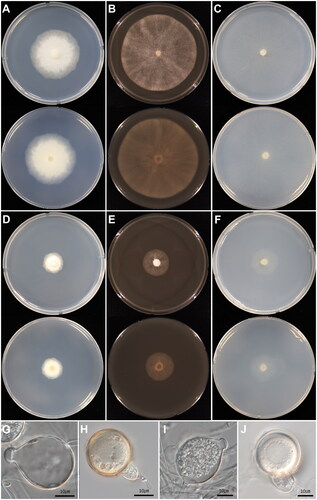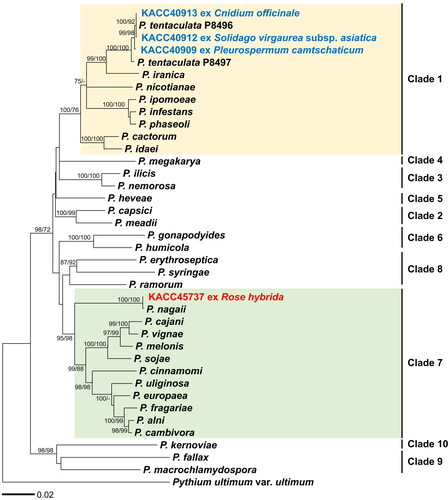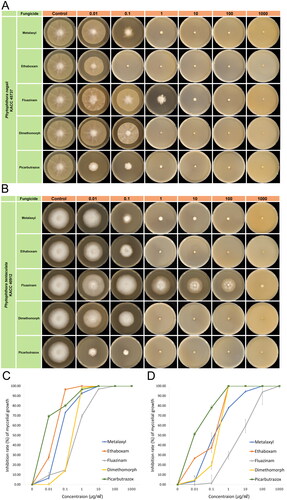Figures & data
Table 1. Information of Phytophthora isolates used in this study.
Table 2. Sensitivity ranges and mean values of effective concentrations to inhibit mycelial growth of Phytophthora nagaii and P. tentaculata isolates by EC50 values for five anti-oomycete fungicides, metalaxyl, ethaboxam, fluazinam, dimethomorph, and picarbutrazox.
Figure 1. Cultural and morphological characters of Phytophthora nagaii (A–C and G–H) and Phytophthora tentaculata (D–F and I–J). (A–C) Colonies of P. nagaii observed after 6 days of inoculation on potato dextrose agar (A), V8 agar (B), and cornmeal agar (C); (E–F) Colonies of P. tentaculata on potato dextrose agar (D), V8 agar (E), and cornmeal agar (F); (G) Subspherical sporangium of P. nagaii; (H) Oospore of P. nagaii; (I) Spherical, papillate sporangium of P. tentaculata; (J) Oogonium of P. tentaculata. Sources: KACC 45737 for P. nagaii and KACC 40912 for P. tentaculata.

Figure 2. Minimum evolution of Phytophthora species based on a concatenated alignment of the ITS rDNA, cox1, and cox2 mtDNA sequences. Bootstrapping values (minimum evolution/maximum likelihood) higher than 70% were shown above/below the branches (1000 replicates). A yellow box presents Clade 1, containing Phytophthora tentaculata, whereas a green box means Clade 7, containing Phytophthora nagaii.

Figure 3. Mycelial growth of Phytophthora nagaii (A and C) and Phytophthora tentaculata (B and D) on V8 agar media, containing different concentrations of anti-oomycete fungicides (0, 0.01, 0.1, 1, 10, 100, and 1000 ug/mL). Agar plugs sourced from seven-days-old colonies were inoculated on V8A, with daily measurements of mycelial diameter until the control group reached a diameter of 60 mm.

